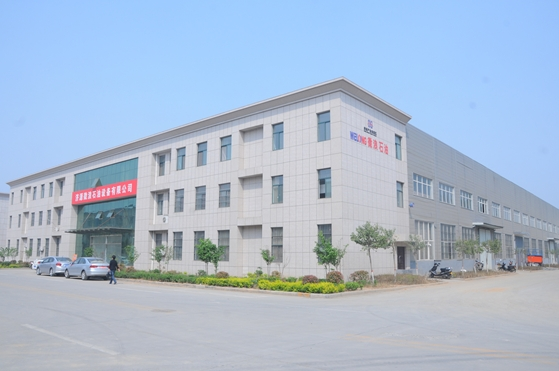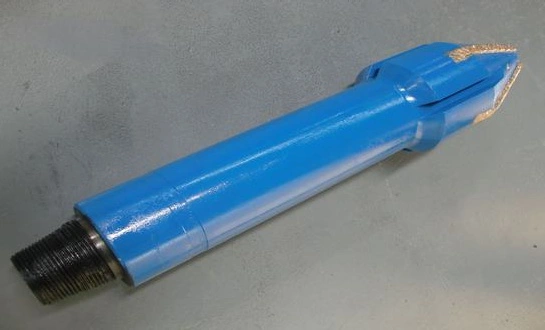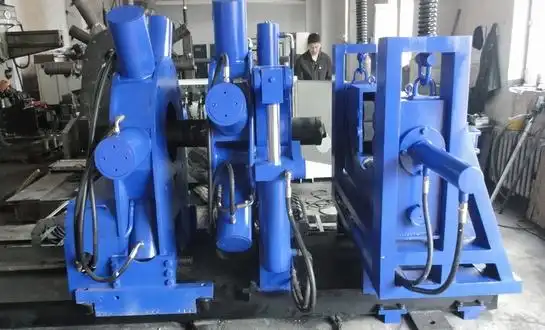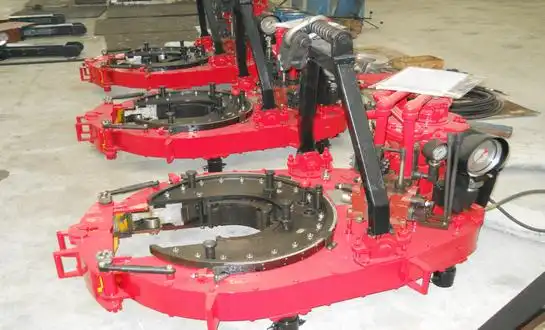How Do Tension Rollers Ensure Consistent Substrate Speed?
Mechanical Design and Precision Engineering
The mechanical design of tension rollers is a marvel of precision engineering. These rollers are typically constructed with a high-quality steel or aluminum core, covered with a specialized surface material chosen for its friction properties and durability. The roller's diameter, width, and surface finish are carefully calculated to match the specific requirements of the substrate being processed. Advanced manufacturing techniques, such as computer-numeric-controlled (CNC) machining, ensure that each roller meets exacting tolerances, often within micrometers.
The roller's bearings are another critical component in maintaining consistent speed. High-precision bearings with minimal friction allow the roller to rotate smoothly, even at high speeds. Some advanced tension rollers incorporate ceramic bearings, which offer superior performance in terms of speed, temperature resistance, and longevity compared to traditional steel bearings.
Tension Control Mechanisms
Tension rollers employ various mechanisms to control and adjust the tension applied to the substrate. One common approach is the use of pneumatic or hydraulic cylinders that can dynamically adjust the pressure applied to the roller. These systems allow for real-time tension adjustments based on feedback from sensors monitoring the web tension.
Another method involves the use of dancer rollers, which work in conjunction with tension rollers. Dancer rollers move vertically or horizontally in response to changes in web tension, providing a buffer that helps maintain consistent tension throughout the process. The position of the dancer roller is typically monitored by a sensor, which feeds back to the control system to adjust the speed of the tension roller accordingly.
Feedback Systems and Intelligent Control
Modern tension roller systems are equipped with sophisticated feedback mechanisms and intelligent control systems. Load cells or tension transducers continuously measure the web tension, providing real-time data to the control system. This data is processed by advanced algorithms that can make micro-adjustments to the roller speed and pressure multiple times per second.
Some systems incorporate predictive models that can anticipate changes in tension based on factors such as substrate properties, processing speed, and environmental conditions. This proactive approach helps prevent tension variations before they occur, ensuring a more stable and consistent process.
Can Automated Tension Roller Systems Reduce Human Error?
Integration of Advanced Sensors and Machine Learning
Automated tension roller systems have made significant strides in reducing human error through the integration of advanced sensors and machine learning algorithms. These systems employ a variety of sensors, including optical encoders, laser displacement sensors, and ultrasonic sensors, to continuously monitor various parameters of the R2R process. The data collected from these sensors is processed in real-time by sophisticated machine learning models that can detect subtle patterns and anomalies that might escape human observation.
For example, a machine learning algorithm might analyze historical data to identify correlations between specific process conditions and the occurrence of web defects. This knowledge can then be used to predict potential issues before they manifest, allowing the system to make preemptive adjustments to the tension roller settings. By removing the need for human operators to constantly monitor and adjust tension settings, these automated systems significantly reduce the risk of errors caused by fatigue, distraction, or inconsistent decision-making.
Adaptive Control Systems for Dynamic Process Optimization
Adaptive control systems represent another leap forward in automated tension roller technology. These systems go beyond simple feedback loops by continuously optimizing process parameters based on real-time performance metrics. Using techniques from the field of artificial intelligence, adaptive control systems can learn from each production run, gradually refining their control strategies to achieve optimal results.
For instance, an adaptive system might automatically adjust tension profiles throughout a production run to compensate for changes in substrate properties or environmental conditions. This level of dynamic optimization is far beyond the capabilities of human operators, who might struggle to maintain consistent quality over long production runs or across different batches of materials.
Human-Machine Collaboration and Error Reduction
While automated tension roller systems can significantly reduce human error, they don't eliminate the need for human expertise entirely. Instead, these systems enable a new paradigm of human-machine collaboration that leverages the strengths of both. Automated systems excel at handling repetitive tasks, maintaining consistent performance over long periods, and processing vast amounts of data to make rapid decisions. Human operators, on the other hand, bring critical thinking skills, adaptability to unexpected situations, and the ability to interpret complex patterns that may not be easily quantifiable.
In this collaborative model, human operators take on more supervisory roles, overseeing multiple production lines and intervening only when necessary. The automated system handles routine operations and provides detailed analytics to support decision-making. This approach not only reduces errors but also allows human operators to focus on higher-level tasks such as process optimization and quality improvement initiatives.

Case Studies: Tension Roller Failures in Flexible Electronics Production
Impact of Tension Inconsistencies on OLED Display Manufacturing
A leading manufacturer of flexible OLED displays encountered significant yield issues during the scale-up of their production process. Initial investigations revealed that inconsistent web tension was causing minute distortions in the polymer substrate, leading to misalignment of subsequent layers and ultimately resulting in display defects. The root cause was traced back to worn bearings in several tension rollers, which were introducing subtle vibrations and speed fluctuations.
To address this issue, the manufacturer implemented a comprehensive tension control system with high-precision tension rollers equipped with advanced ceramic bearings. The new system incorporated real-time tension monitoring and adaptive control algorithms. As a result, web tension variations were reduced by over 90%, leading to a 15% increase in overall yield and significantly improving product quality consistency.
Tension Roller Failure in Printed Electronics Production
A printed electronics company specializing in flexible sensors experienced a sudden increase in product defects during a high-volume production run. Analysis of the defective products showed inconsistent conductive ink deposition, suggesting issues with the substrate tension during the printing process. Further investigation revealed that one of the key tension rollers had developed a slight eccentricity due to uneven wear, causing periodic tension fluctuations.
The company implemented a predictive maintenance program using vibration analysis and real-time monitoring of roller performance. This proactive approach allowed them to identify potential roller issues before they impacted product quality. Additionally, they upgraded to a more advanced tension control system that could compensate for minor roller imperfections. These measures resulted in a 30% reduction in defect rates and a significant improvement in production efficiency.
Overcoming Material Challenges in Battery Electrode Production
A manufacturer of lithium-ion battery electrodes faced challenges when transitioning to a new, more delicate electrode material. The existing tension roller system, which had performed adequately with previous materials, was causing micro-cracks in the new electrode coating due to excessive tension spikes during acceleration and deceleration phases.
To solve this problem, the company collaborated with tension roller specialists to design a custom solution. They implemented a multi-zone tension control system with specialized low-inertia tension rollers. The new system incorporated advanced tension profiling capabilities, allowing for precise tension control throughout the acceleration, steady-state, and deceleration phases of production. This tailored approach resulted in a 40% reduction in material waste and enabled the successful adoption of the new electrode material, ultimately leading to batteries with higher energy density.
Source: CHINA WELONG-Oilfield tools Manufacturer
FAQ about Tension Roller
What is the primary function of a tension roller in metal processing?
The primary function of a tension roller in metal processing is to maintain consistent tension in the material as it moves through various stages of the production process. By controlling the tension, the tension roller ensures smooth and uniform movement of the metal, preventing issues such as wrinkles, material distortion, or uneven feed rates. This helps in maintaining the quality of the metal sheet or strip, improving accuracy, and reducing the risk of damage to both the material and the equipment. Proper tension control is crucial for efficient and precise metal processing operations.
How do work rolls differ from tension rollers?
While both work rolls and tension rollers are crucial in manufacturing processes, they serve different purposes. Work rolls are primarily used in metal forming operations to shape and reduce the thickness of metal sheets or strips. They apply significant force to the material being processed. Tension rollers, on the other hand, are used in web handling processes to control the tension and speed of flexible materials such as paper, plastic films, or textiles. Tension rollers typically apply much lower forces and are designed for precise tension control rather than material deformation.
What factors influence the selection of tension roller materials?
The selection of tension roller materials is influenced by several factors, including the type of material being processed, the operating environment, and the specific requirements of the manufacturing process. Key considerations include the material's strength, durability, and resistance to wear, corrosion, and temperature fluctuations. Additionally, the roller's ability to withstand vibrations and maintain alignment is crucial. Other factors like cost, ease of maintenance, and compatibility with the production system are also important in determining the most suitable material for tension rollers in different industrial applications.
In conclusion, the role of tension rollers in the roll-to-roll processing industry cannot be overstated. These precision-engineered components are fundamental to maintaining consistent substrate speed and tension, which is critical for ensuring product quality and process efficiency. As we've explored, automated tension roller systems have significantly reduced human error, leading to more reliable and consistent production outcomes. The case studies presented highlight both the challenges and solutions in implementing effective tension control across various applications in flexible electronics production.
The continuous advancement in tension roller technology, including the integration of AI and machine learning, promises even greater improvements in R2R processing capabilities. As industries continue to push the boundaries of what's possible in flexible electronics, advanced materials, and high-precision manufacturing, the role of tension rollers will undoubtedly evolve to meet these new challenges.
For more information on cutting-edge tension roller solutions and expert guidance on optimizing your R2R processes, don't hesitate to reach out to the specialists at Welong. Contact us at oiltools15@welongpost.com to discuss how we can help enhance your manufacturing capabilities.





